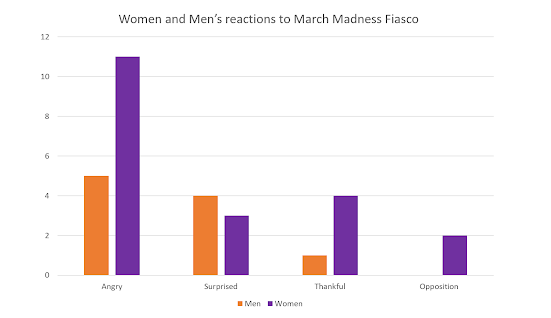Sexism in sports has recently become more openly talked about in recent years. Before it was never a conversation that was “appropriate” because it makes others uncomfortable or because others disagreed with some of the arguments being made against sexism in sports. A large number of academic articles and research examines how sexism in sports has evolved into something that can be spoken about openly, and that is due to social media.
Research into the importance of understanding sexism in sports has reached multiple categories including sexism in sports journalist, for example Jourdan Rodrigue’s interview of Cam Newton. Sexism inn sports has also been called out through social media campaigns, like Just Not Sport’s campaign of #MoreThanMean. And social media has since been identified as a way for women to finally speak out against the dichotomy of either pretty or powerful in sports.
On March
18th, 2021, Ali Kershner, the Stanford Sports Performance Coach
posted a controversial image of the NCAA Men’s Basketball tournament vs.
Women’s Basketball tournament bubble set up. The men received a fully equipped
lifting facility for a mass number of people, whereas the women received a few floor
mats and one set of dumbbells ranging from 5-25 pounds.
In the
past year of social reform and protest, this post draws importance to the idea
of equality and justice that’s also voiced by Kershner, “In a year defined by a
fight for equality this is a chance to have a conversation and get better.”
Much of the previous articles covered information regarding reactions from the
general public via social media but none include numerical data about what kind
of reactions people where having and who was speaking up and using their voice,
and that is what my research is interested in finding.


